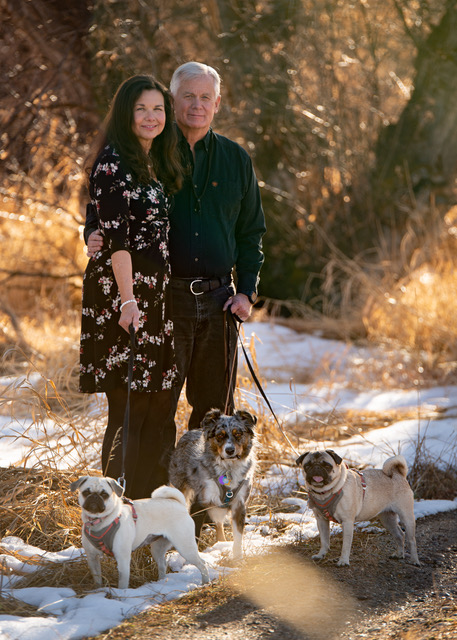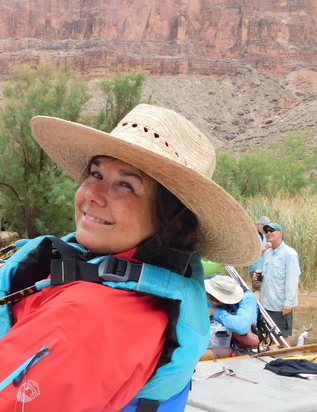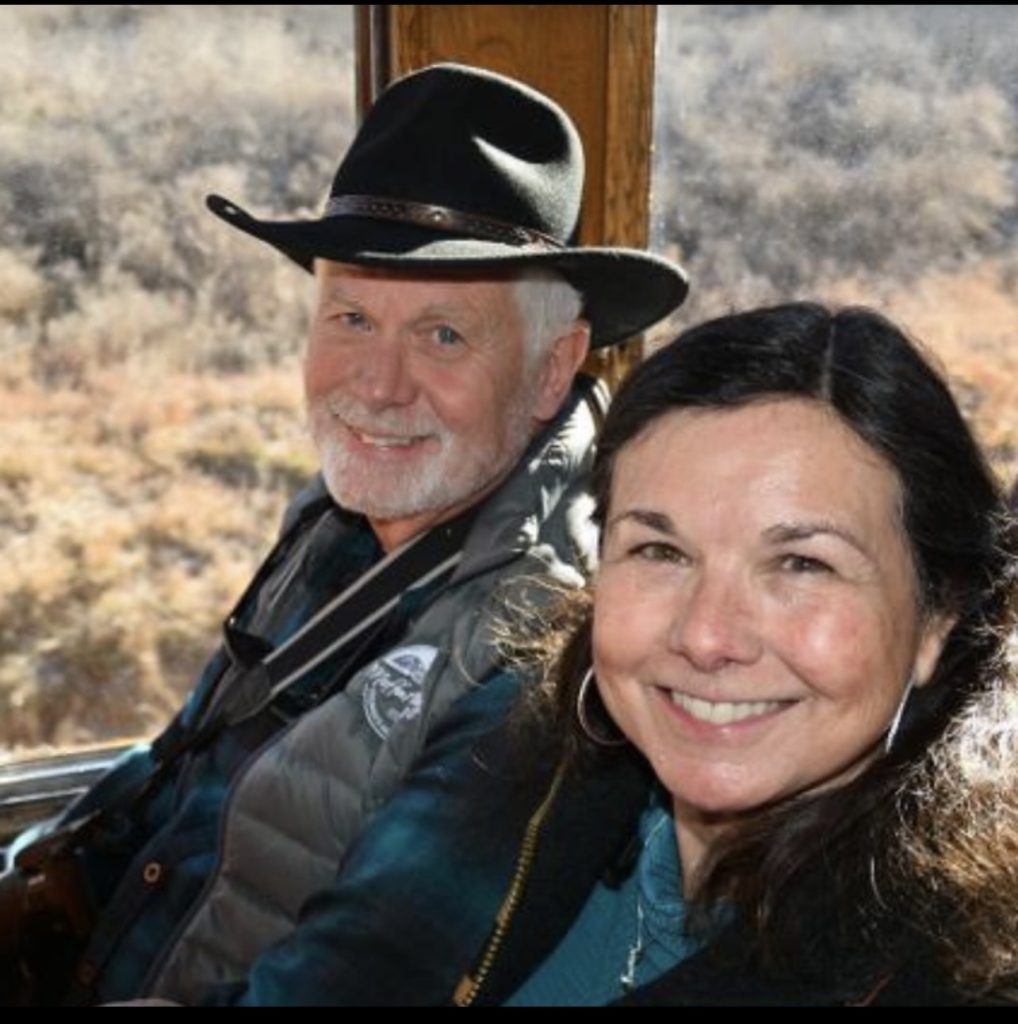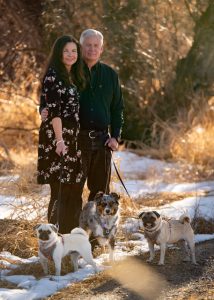‘Who we have is each other’: Kleinschnitz cites collaboration, communication and steady stewardship in Craig City Council run

Courtesy Photo/Denise Kleinschnitz
Denise Kleinschnitz says she began studying Craig a year before moving here, looking for what made the city “tick” and how she could support it. Seven years later, the longtime volunteer and educator says that motivation, and what she has learned since, is a big part of her decision to run for a seat on the Craig City Council.
Kleinschnitz moved to Craig when her husband accepted a full-time role with Moffat County Tourism, which was recently renamed Visit Moffat County. She grew up and raised her children in rural central Oregon where her family grew alfalfa, hay and kept a few cows.
She has lived in larger places for school and work, but said that she always returns to smaller communities because she loves the feelings and connections that she gets there.
“I consider Craig my home, and I want to serve publicly,” she said.
Her professional background includes helping establish a regional accounting firm, where she served as firm administrator, and running Adventure Bound River Expeditions during its final year in her family.
In Craig she has sought service roles “over and above” her teaching. She served as part of the Moffat County School District strategic plan group as a high school representative and was also a member of the the Moffat County Affiliated Junior College District Board, including a term as treasurer. That role led to her involvement with the Craig Urban Renewal Authority as Colorado Northwestern Community College’s liaison and as a commissioner.
Additionally, she has judged the Parade of Lights for several years.
Kleinschnitz previously applied for an appointment to the council when a vacancy opened last year. She was not selected, but said the petition process this cycle reaffirmed her decision to run again.
“When you gather 50 signatures, you have lots of conversations,” she said. “People are invested in Craig, and I am invested in Craig. This is my home.”
She framed Craig’s present moment by stating that she feels the community is facing a shrinking tax base over the next few years due to the closure of power plants and coal mines.
“Numbers I’ve heard range from 40 to 47 percent,” she said. “Nobody knows exactly what that will be, and part of the challenge is to be conservative financially and still fund worthy causes and things that the citizens want while also looking forward to a place nobody has been before.”
If elected, she said she would focus on communication and outreach.
She noted that council and board meetings are business meetings with specific procedures, which can be at odds with residents’ hopes for dialogue during public comment. She praised the council’s practice of directing comments to the appropriate agenda item and she suggested creating additional opportunities to create two-way conversations between Craig’s government and the people that it serves.
“It would be useful to have other times where those could be discussed,” she said, adding that regular updates on social media from City Hall or the mayor could help residents feel that their voices are being heard at a deeper level. “If we did some communication in those sorts of ways, that would build a lot of collaboration.”
In regards to current projects within the city, Kleinschnitz said she is “very excited” about the planned business park. As a CURA commissioner, she said the potential for a third urban renewal area that includes the site would provide incentives for employers to locate their businesses there. She also supports Craig joining the proposed Yampa Valley Regional Transportation Authority.
“I want us to have a seat at the table,” she said regarding the RTA.
She also saw potential benefits for the community including a circulator bus, improved bus stops, added routes between Craig and other communities and transportation to the airport.
Housing, she said, remains a “thorny” issue, with the cost of construction and finished product outpacing wages. She said there has been confusion about which projects are city-led and which are private.
“The 8th Street project has not yet been successful,” she said. “Looking in the rearview mirror, some decisions might have been made differently. The Meadows [Apartments] project is private. The city doesn’t have funding in that and I think there may have been a misunderstanding in that regard.”
Beyond large initiatives, Kleinschnitz also said that everyday concerns matter as well.
While gathering signatures, she heard comments about code enforcement, unlicensed vehicles, weed abatement, junk and litter, noting that some residents felt frustrated or unsure of the process while others reported that issues were addressed well at times.
“People want to feel good about where they live,” she said. “They want their neighborhood to be attractive for themselves, their neighbors, visitors and possible employers.”
Kleinschnitz said her vision for economic transition is broad support for employers of all sizes.
“Everybody wants high-paying jobs, and of course that’s important,” she said. “But any company that wants to come here and employ our friends and neighbors needs to be supported.”
She said the city can offer incentives, tax structures, streamlined processes and knowledgeable staff who work alongside businesses that are expanding or relocating.
She pointed to the river park as an example of a community asset that fits Craig’s identity.
“It’s not just for people who play in the water,” she said. “People can picnic in developed areas and it’s a great gathering place.”

She also pointed to the fact that the Yampa River is one of the last free-flowing rivers in the United States and said Craig has an opportunity to showcase improvements for recreation and walking along its run through the city.
When asked about a negative narrative she sees online and in the community, she urged modeling the outlook she sees for the city.
“I believe in Craig, and I believe Craig deserves the best,” she said. “I think it’s fear. Nobody knows what’s going to happen. In the end, who we have is each other. We need to support each other, be visible in the community and meet people where they are.”
She noted that some council members and their families are experiencing the transition firsthand and such things bring useful and constructive perspectives.
Looking 10 to 20 years out, she described a “vibrant” Craig that knows who it is with residents who are proud to be here. She said she expects new companies to grow in ways that are hard to predict.
“We aren’t there now, but we can be,” she said. “We have everything in place, mostly the people, to be successful in the future.”
Kleinschnitz also volunteers as an online mediator with Front Range programs and hopes to help establish a community dispute resolution program in Craig. She said her training as a professional mediator would help her bring people to common ground as a member of the city council.
“My heart is that people communicate and communicate well,” she said. “I want everybody to feel involved and heard while also getting good, true and correct information.”

She describes herself as a “tender-hearted analytic,” a researcher who digs in until she understands the issue.
“I want to bring that to be at the disposal of the community,” she said, “I want to help people have well-researched and informed solutions for whatever we decide to look at, or do differently, than what we’re doing now.”

Support Local Journalism

Support Local Journalism
Readers around Craig and Moffat County make the Craig Press’ work possible. Your financial contribution supports our efforts to deliver quality, locally relevant journalism.
Now more than ever, your support is critical to help us keep our community informed about the evolving coronavirus pandemic and the impact it is having locally. Every contribution, however large or small, will make a difference.
Each donation will be used exclusively for the development and creation of increased news coverage.








